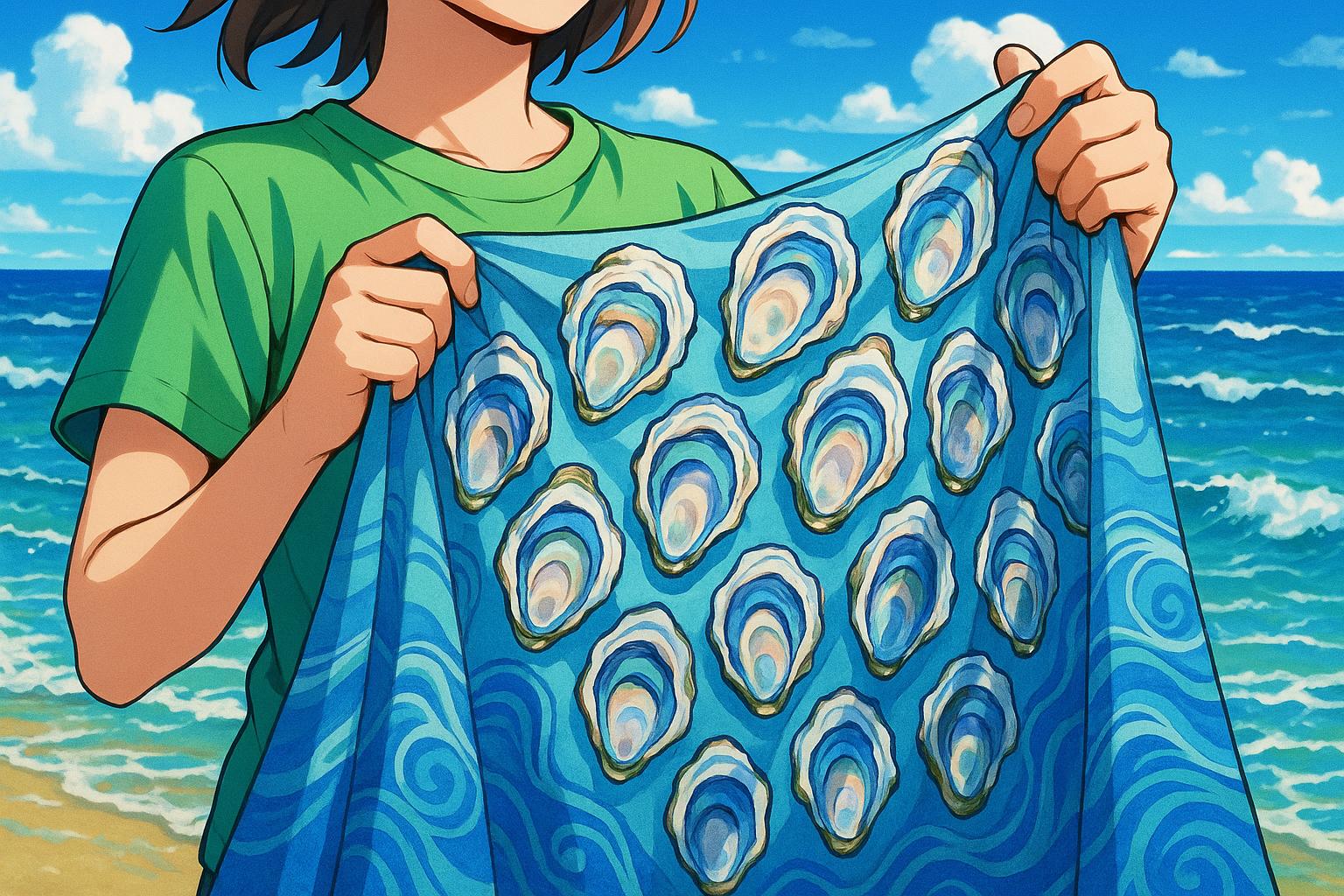In celebration of World Environment Day, Creative Tech Textile is showcasing its groundbreaking material, Seawool, which transforms discarded oyster shells and recycled plastic into a sustainable textile solution. This innovative approach not only underscores the potential of reusing natural waste but also aligns with a growing movement within the fashion industry to embrace more sustainable practices.
The global fashion sector is under increasing scrutiny to adopt sustainable practices. According to the World Economic Forum, incorporating recycled materials into clothing could potentially reduce CO₂ emissions by up to 80%. Despite this, polyester—produced from fossil fuels—remains the predominant fibre in textiles. Alarmingly, less than 1% of clothing is recycled into new garments, as highlighted by the Geneva Environment Network. There is an urgent need for the industry to reduce reliance on short-lifecycle plastic-based fabrics and enhance the adoption of circular, low-impact material innovations.
Seawool, which Creative Tech describes as the "Emerald from the Ocean," marks a significant stride in this direction. By combining discarded oyster shells sourced primarily from Taiwan with recycled PET plastic bottles, the company has developed a textile that matches both functionality and environmental responsibility. The material has already gained traction among leading apparel brands in the United States and has generated approximately TWD$200 million (about US$6.1 million) in annual revenue. Notably, Seawool was showcased at PanTextiles Tokyo in May, signalling its increasing visibility in international markets.
Eddie Wang, Founder and CEO of Creative Tech Textile, emphasised the importance of consumer awareness in sustainable fashion. “As consumers grow more conscious of their clothing's environmental impact, we want them to know sustainable material innovations like Seawool exist and are scalable. Our goal is to replace traditional fibres with more environmentally-friendly alternatives,” he stated. The company currently produces around 2,500 tons of Seawool annually, repurposing about 500 tons of oyster shells in the process.
What differentiates Seawool from traditional materials is not only its environmental footprint but also its unique fabric properties. The textile is odour-resistant, moisture-wicking, and provides UV protection, while its production process involves grinding the oyster shells into finer particles to enhance thermal stability. Compared to conventional materials, Seawool offers significant cost and environmental advantages, costing just 1/10 that of down and 1/20 that of high-grade wool. Its performance in terms of water absorption exceeds that of polyester, and its odour-resistance is superior to cotton.
The sustainability potential of materials like Seawool is compelling, particularly as Taiwan produces an estimated 100,000 tons of oyster shells annually, with even larger quantities expected from countries like the United States and China. Despite the challenges involved in refining these shells for textile use, Creative Tech demonstrates a mastery of the specialised processes required for effective large-scale manufacturing. This positions the company favourably to meet the growing demand for eco-conscious materials in fashion.
As the industry grapples with its environmental responsibilities, Seawool stands as a beacon of innovation. By addressing waste through its creation of high-performance, eco-friendly fabrics, Creative Tech is helping to forge a path toward a more sustainable future for fashion, paving the way for other companies to follow suit.
📌 Reference Map:
- Paragraph 1 – [1], [2]
- Paragraph 2 – [1], [6]
- Paragraph 3 – [1], [4]
- Paragraph 4 – [1], [3]
- Paragraph 5 – [2], [5]
- Paragraph 6 – [4], [7]
Source: Noah Wire Services
